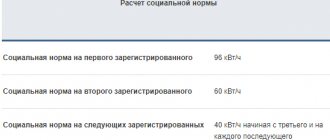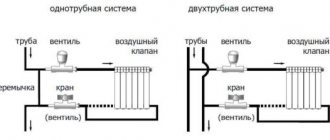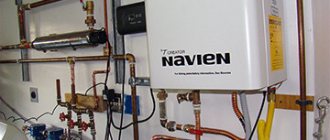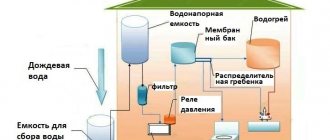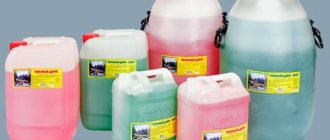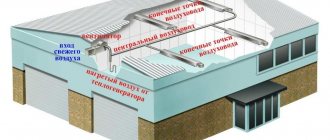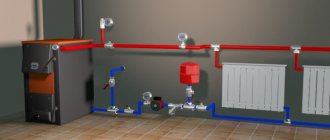The choice of heating mode in a residential building or apartment often does not depend on the residents - if the heating devices are installed by builders, are powered by a common heat source and do not have adjustment controls. However, heat supply to apartment buildings is often carried out in strange modes, which forces apartment owners to change radiators, install control devices on them and arrange additional heating circuits. In this article we will understand what it is to adjust radiators in an apartment and how to do it correctly.
Features of heat transfer from radiators and ways to change it
When trying to regulate heating in an apartment building, you must first understand how the batteries are connected, how efficiently they give off heat, and what condition they are in. There are one- and two-way pipe connections. It is clear from the illustration that the one-sided option means connecting the inlet and outlet pipes on one side of the radiator, and the two-way option - on different sides. The efficiency of heat transfer depends on where the supply and exhaust pipes are located. This is due to the greater density of the cold liquid (with a difference of 2...10 degrees, the difference is small, but fundamental) and its high specific gravity. Thus, the cooled coolant automatically drops to the lower part of the radiator. If the heated liquid is supplied from below, it is difficult for it to displace the cold liquid to the upper part of the heating device. As a result, heating efficiency decreases.
Thus, the most rational option for “pass-through” radiators is to connect the inlet pipe to the top of the radiator, and the outlet pipe to the bottom on the opposite side. The battery that closes the working “chain” (that is, a series of parallel-connected radiators) can be connected according to the “top-bottom on the same side” principle.
If, despite the correct type of connection, the radiators do not produce enough heat, it is necessary to find out the temperature of the coolant. This can be done using data from a heat meter (if it is installed and has such a function) or a thermometer. Analysis using a thermal imager can also help (this method is also convenient for checking the slagging of radiators - the color change makes it clear which sections are working and which are not).
According to standards, heating of the coolant depends on the outside temperature and is determined by the pipeline entering the house.
Interesting: you can independently determine whether the heating of the radiators is really sufficient to create a comfortable temperature in the room using simple calculations. To do this, you can use the data below.
Example: a room of 15 square meters. has two external walls, both with windows. One of the windows faces north. The radiator is located in a small open niche under the north window. In this case, the minimum required power is 15 x 100 = 1500 W.
As amended
1500 +1500x(30+10)/100 = 2100 W
If the coolant temperature is sufficient, but the radiators give off too little heat, they will have to be replaced. If the heat transfer is uniform, but the temperature of the supplied liquid is too low, nothing can be done; you will have to deal with the utilities or arrange additional heating.
How to measure battery temperature correctly
When the issue with the coolant is clarified, you can think about how to measure the temperature of the battery in the apartment. This is easy to do in the following ways:
- Use a regular household thermometer. You need to apply it to the battery and wait until it warms up. To account for the error, it is better to add 1-2 degrees to the data obtained.
- Use an alcohol thermometer, attaching it to the radiator with tape, and then insulating it with insulating material, such as foam rubber. The information obtained by this method is indicative in dynamics. The device can be left for a long period to continuously monitor the situation.
- Use an infrared thermometer. In practice, they have a small error, and do not require direct contact with the heating device. And the result is given instantly.
- Use an electrical measuring instrument with a thermal ramp and sensor. The sensor is installed on the battery, and when the “measure temperature” function is selected, the device displays its value.
If the batteries are too hot
In this case, the question arises of how to adjust the heating radiators in the apartment. The user cannot change the network temperature; all that remains is to reduce the fluid flow rate in the heating devices. For this purpose, special manual or automatic devices are used.
A manually operated valve is the simplest and long-known method. By reducing the available cross-section of the pipe using a rod, we reduce the flow of heated liquid into the radiator and thereby reduce its heat transfer. In this case, you should check whether such “heat adjustment” will not be an unprofitable enterprise: when all batteries are connected in parallel, a decrease in the flow in the first one automatically causes cooling of the others. Thus, if the first radiator in the chain is located in the bedroom and it is too hot, you can reduce its heating. But then the last radiator - for example, in the kitchen - will turn out to be almost cold and the heating in the room will be insufficient.
Important: if it is hot in the apartment, but the heating system is single-pipe, adjustment can only be made if there are bypasses (jumpers). Otherwise, by “screwing on” the batteries at home, you can get into trouble with neighbors living “further down the riser” or with utility service employees. With a two-pipe scheme, such problems do not arise.
To regulate heating radiators, install either a valve and a ball valve on the inlet and outlet pipes, respectively, or a thermostat on the heating radiator.
Important: a valve must be installed on the supply pipe, not a ball valve! The valve is a purely shut-off valve with two operating positions - “open” and “closed”. Intermediate positions of the ball lead to its gradual destruction by solid particles of the coolant, therefore the “lifetime” of such a valve is much shorter than that of a valve. The valve is considered a shut-off control valve for heating and has a wider range of operating positions between the extremes.
To manually adjust the heating system in an apartment, special control valves with direct or angular connections are used.
The choice of the desired position of the rod in this case depends on the outside temperature, the heating of the water supplied to the heating system and the wishes of the users. How to regulate radiators with a regulator? Carefully monitor the temperature in the apartment (house) and “tighten” the valve to the desired result. Interestingly, manual valves have a built-in thermal valve and you can relatively easily turn a device for manual adjustment into an automatic one by purchasing and attaching a thermal head to it.
Automatic regulators
Automatic devices consist of a thermal valve and a thermal head.
The valve allows you to change the cross-section in the supply pipe; the thermal head, based on remote or built-in temperature sensors, as well as additional controllers, gives a command to change the position of the rod in the valve.
The simplest (and cheapest) version of the device contains a capsule of gas or liquid, which expands and contracts under the influence of temperature changes. The rod piston located next to this capsule moves towards decreasing or increasing the flow area of the pipe. More complex devices are powered by a battery or accumulator and transmit force to the rod using electric current. Some options connect to the home electrical network, for example, thermostats built into the overall smart home system.
The question of how to regulate the temperature of a heating battery using a thermostat - in a fully automated mode or with the control of the homeowner - is decided depending on the general scheme of the smart home system and the features of its operation.
An important nuance: for normal operation of a device with a remote temperature sensor, it is necessary to ensure constant and free air circulation near the thermometer. If the sensor is located directly in the thermal head, it is better to mount it horizontally (perpendicular to the main plane of the radiator), since it is in this position that the heating elements have the least effect on the thermometer.
The quality of operation of remote temperature sensors is also affected by:
- thick curtains covering it;
- the distance between the window sill and the sensor is too small;
- installation of a heating device in a niche.
Main menu
Good day, dear readers! If you have at least a little experience with the operation and maintenance of central heating systems, then you have probably heard about such a thing as return overheating. What is it, why does it occur, and how to deal with it?
Return overheating is when the temperature of the water leaving the house exceeds the temperature that should be according to the temperature schedule. That is, according to the schedule, let’s say the return should be 63 °C, but in fact it is 67 °C. Moreover, overheating according to the temperature graph should not be looked at by the outside air temperature, since the heating network is inertial, and the temperature changes during the day. You need to compare by temperature t1, that is, the supply temperature.
We first look at the thermometer readings for supply t1, then at the temperature graph to see what the corresponding temperature t2 should be. Then we look at the actual t2 on the thermometer and compare it with t2 according to the graph. It’s good when t2 matches or is slightly less than t2 according to the temperature graph. And it’s bad if in fact the return temperature is too high against the schedule. According to clause 9.2.1 of the “Rules for the technical operation of thermal power plants”, “the average daily temperature of the return network water should not exceed the temperature specified by the temperature schedule by more than 5%.”
Nowadays, cunning power engineers include this clause from the Rules in heat supply contracts. That is, if your overheating jumps beyond 5%, then you will additionally be fined for exceeding the return flow. If the overheating falls within this 5%, there will be no penalty, but it’s better for you to eliminate the overheating anyway. The ideal option is when the return is on your schedule, or a little lower.
There are basically two reasons for overheating. The first is the flow through various jumpers between the supply and return, that is, from supply to return. This mainly occurs either through the hot water line or through the vent. Therefore, if you experience overheating, first of all, look to see if there is a flow from the supply to the return. But in fact, this happens rarely.
The main and main reason for overheating, in 95% of cases, is increased consumption of network water
. That is, when network water overheats, more water passes through your heating unit than you actually need. Why do power engineers struggle so much with overheating? An increased consumption of network water indicates that the coolant consumption is not the calculated one, that is, the consumption is overestimated and more than the calculated one. And this is an increased circulation, which causes an increase in energy consumption to drive network pumps at the heat source. Electricity costs money, so excessive return flow is a direct loss for the heat supply organization.
I have heard the opinion that increased return flow is beneficial to the consumer. They say that if you return T2 from home with overheating according to the schedule, then the heat consumption will become less, because the difference T1-T2 will decrease. However, it is not. The amount of heat Qinput, Gcal, is generally considered as follows. Amount of heat supplied Q 1 = G1* (t1- tх.в.)*0.001 where G1 is the water consumption in tons per hour; t/hour; t1 – supply water temperature; th.v. – temperature of cold water, which is prepared and heated at the heat source, usually tx.w. 5 °C is accepted.
The amount of heat in the return is calculated similarly: Q 1 = G2*(t2- tх.в.)*0.001. The heat consumption is determined by the formula: Qinput = Q1— Q2= G1*( t1- tх.в.)*0.001- G2*(t2- tх.в.)*0.001. So it turns out that although the difference t1-t2 decreases in case of overheating, the increased consumption G ultimately outweighs the formula, and the amount of heat Qinput is still greater. In general, the conclusion is this: for the consumer, overheating in the return means overheating of the entire building and an increase in the amount of heat consumed, and it is definitely not economically profitable for the consumer.
How to eliminate overheating? To do this, in the ITP (heating unit) at the supply, before the elevator, it is necessary to adjust the pressure regulator (or flow regulator), depending on what is installed. What is a pressure regulator RD, I wrote here. By adjusting the pressure through the RD, and looking at the readings of the heat meter, or thermometers and pressure gauges, you can set the required pressure at which the flow rate will not exceed the calculated one. It’s better, of course, to let the experts do it. If the heating unit is automated by modern automation, then during normal operation of the equipment, overheating is impossible in principle.
Most recently, I wrote and published a book entirely devoted to heating return, overheating by return. It’s called “Everything you wanted to know about return overheating!”
Here is the content of this book:
1. Introduction
2. What is heating return?
3. What causes return overheating?
4. Penalties from the heat supply organization for overheating of the return.
5. How to adjust the heating system and eliminate overheating in the return pipeline?
6. Conclusion
You can view it using the link below:
Everything you wanted to know about return overheating!
I will be glad to receive comments on the article.
Adjusting heating flow or return
You can partially regulate the heating of all heating devices in an apartment or house using the so-called hydraulic balancing. To more evenly distribute water in the system, install thermostats and taps on all batteries. When setting up the system, the return temperature in the radiators is checked. It should have a difference of +\- 1 degree Celsius.
Balancing is carried out with the thermal heads fully (maximum) open. To check the return temperature, a contact temperature sensor is used, for example, in a multimeter.
For radiators with an increased temperature of the output pipe, reduce the cross-section of the input pipe and check the system again.
Parameters for starting heating
As autumn approaches, the temperature outside becomes lower and lower, people touch their batteries every day and hope that today they will become hot. If this does not happen, then the residents look for the culprits, but in fact, all standards for the supply of heat to houses are specified in Resolution No. 354 of 2011.
This document states that heat is supplied at an outside temperature of 8 degrees Celsius, if it lasts for five days in a row . If this indicator fluctuates in one direction or the other over the specified time, then the radiators and risers in the apartments will remain cold.
Heat is supplied only on the sixth day and, as a rule, in most cases the heating season begins on October 15 and ends on April 15.
In this video you will learn the temperature standards in the apartment:
How to adjust heating radiators in a private house with a boiler
If the heating system is individual and “powered” by a gas or electric boiler, then, in addition to the proposed adjustment measures, you can simply change the settings of the heating device. Typically, the heating range of coolants is 58...84 degrees Celsius. Excessive heating is prohibited to avoid damage to the pipes. Less heating than specified can lead to the formation of acidic condensate, which damages the boiler.
Thus, adjusting heating radiators in a private house by adjusting a gas heating boiler occurs as follows:
- increasing or decreasing heating of the coolant;
- waiting to stabilize the temperature in the system (it is advisable to check the return temperature on each of the radiators using a contact temperature sensor);
- new adjustment.
Also, in individual heating systems, heat transfer can be adjusted by adjusting the heating circulation pump.
The speed of movement of the heated liquid through the heating devices depends on its speed - minimum, medium, high. The faster the water moves through the pipes, the more efficiently the coolant transfers heat. Since the movement speed is usually 30...90 l/min, the adjustment possibilities are quite wide.
The device can be adjusted manually or automatically, depending on the model.
For some devices, only automatic adjustment is provided.
Important: despite the fact that in systems with natural circulation you can do without a pump, installing one can save up to 20...30% of energy. This is due to the higher speed of coolant passing through the system and supplying it to the boiler for new heating at a higher temperature. At the same time, heating efficiency does not decrease, the heat transfer of radiators remains constant or even increases.
By increasing - or decreasing - the speed at which heated water passes through the radiators, you can significantly change the parameters of the heating system. With hydraulic balancing, the quality of heating increases by 20...45%, and savings (gas, electricity, money on utility bills) can reach 30...35%.
Optimal values in an individual heating system
Autonomous heating helps to avoid many problems that arise with a centralized network, and the optimal temperature of the coolant can be adjusted according to the season. In the case of individual heating, the concept of standards includes the heat transfer of a heating device per unit area of the room where this device is located. The thermal regime in this situation is ensured by the design features of the heating devices.
It is important to ensure that the coolant in the network does not cool below 70 °C. 80 °C is considered optimal
With a gas boiler, it is easier to control heating, because manufacturers limit the ability to heat the coolant to 90 °C. Using sensors to regulate the gas supply, the heating of the coolant can be adjusted.
It is a little more difficult with solid fuel devices; they do not regulate the heating of the liquid, and can easily turn it into steam. And it is impossible to reduce the heat from coal or wood by turning the knob in such a situation. Control of heating of the coolant is quite conditional with high errors and is carried out by rotary thermostats and mechanical dampers.
Electric boilers allow you to smoothly regulate the heating of the coolant from 30 to 90 °C. They are equipped with an excellent overheat protection system.
What to do if standards are violated
If you find that the radiators in the apartment are cold, you should find out whether this is a problem exclusively for this room or whether all residents of the house are faced with it. A collective appeal always attracts more attention than an individual one.
If the quality of heating is unsatisfactory and does not comply with SNiP, a complaint can be filed:
- to a service organization: homeowners association, management company, housing construction cooperative;
- resource supply company;
- emergency dispatch service;
- housing inspection. It usually operates a special hotline for such requests.
Organizations will receive the complaint over the phone and then register it. After this, specialists will establish and eliminate the cause of the lack of heating, recording a violation.
Later, based on the heating network inspection report, a recalculation for the period of no heat occurs.
If the above organizations do not take any measures to restore heating, you should file a complaint with Rospotrebnadzor and the prosecutor's office.
How to reduce your heating bills
To do this, the owner or tenant must contact the billing company. When applying, a statement is written indicating the name of the owner or tenant, address and the period for which the receipts need to be recalculated. Copies of supporting documents are attached to the application.
Reasons why recalculation should be carried out
- According to clause 6 of Appendix 1 to Resolution No. 354, the fee is reduced if there is no heat supply for more than 24 hours during the month in total or more than 16 hours at a time. If the room is warmer than 12°, recalculation is carried out in the absence of heat for 8 hours, and at 8 degrees - less than 4 hours. Charges are withdrawn for the whole day.
- If there was no heat supply for several days, the entire period is removed from the calculation. As a rule, the heating companies and the management company have information about outages, so the payment will be recalculated automatically.
- Another reason for recalculation is errors in calculations and databases. In most cases, the amount will be reduced without the owner’s request, but sometimes an application is required, accompanied by supporting documents.
- Adjustment for monthly calculation of the average amount for heat supply. With this method, accruals are made year-round in equal parts, based on last year’s average. At the end of the year, accruals are adjusted. Recalculation is carried out without an application.
- Correction of meter data - a situation arises when a heat meter fails. If the readings are incorrect, a recalculation is carried out based on the average data for the previous period.
What should be the temperature in the rooms
Thermal standards for living rooms, kitchens, bathrooms, toilets, corridors are specified in GOST 30494–2011, SanPiN 2.1.2.2645 and Resolution No. 354 of 05/06/11. The documents also indicate the humidity parameters that make this thermal regime comfortable.
GOSTs and SNIPs contain the following requirements for indoor temperature:
- For the cold period – optimally +20–22°, acceptable +18–24°.
- For the warm period – optimally +20–25°, acceptable +20–28°.
The same requirements are specified in clause VI of the Post. 354. According to this document, in residential premises it should be no cooler than +18°, and in corner rooms - up to +20°. Standards are also indicated for northern regions with an average daily temperature below – 31°. It is +20° for all rooms and +22° for corner rooms.
Other GOST indicators
| Temperature, degrees, | Premises | ||||
| Kitchen, toilet | Combined bathroom | Corridor | Staircase, lobby | Storerooms | |
| Optimal | 19–21 | 24–26 | 18–20 | 16–18 | 16–18 |
| Acceptable | 18–26 | 18–26 | 16–22 | 14–20 | 12–22 |
GOST standards also indicate air humidity. This was done for a reason. In addition to real temperature indicators, there are also tangible ones. The drier the atmosphere, the warmer the person. Dry air creates cold and discomfort. For living rooms and corridors, the optimal humidity is 30–45%, and the acceptable humidity is 60%.



